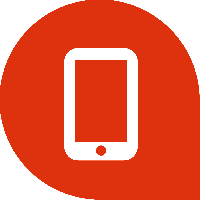 What are your five favorite smartphone apps (set aside the ones that ship with the phone like text, email, camera…)? Flipping through my home pages the ones I use the most are
What are your five favorite smartphone apps (set aside the ones that ship with the phone like text, email, camera…)? Flipping through my home pages the ones I use the most are
1. Uber
2. Waze
3. Wigo
4. United Airlines
5. Bank of America
When I think about these, it’s all about two-way access to real-time information.
Think about Uber: I need a lift. My smartphone knows where I am and within a few taps of the screen, I can enter where I’m going. I authorize this information to the Uber database in the cloud and it offers my job, anonymously, to the drivers in my area who are looking for a fare. The driver knows my first name, my location and, if I have been a good client in the past. If I choose Uber-pool, I might get matched with another traveler to share the fare. At the end of the line I simply leave and my card is charged. I might have spent more or less than an old school taxi, but it’s so convenient I’m not overly concerned.
The other apps listed above share the theme of two-way (or even three way), real-time information exchange that benefits all parties. Things like location, route, photos, preferences, and friends can all come together in a curated experience that results in a win-win for multiple parties. Historically, these real-time advantages have been leveraged for B2C endeavors, but can’t these same principles be applied in a B2B setting? Can smartphones, SaaS and the cloud be leveraged to improve the lives of customers, partners, field employees and product owners?
The power of real time that has provided B2C markets such success can be equally as advantageous when applied to B2B organizations. For example, using a real-time messaging application can streamline communication, maximizing efficiency and making sure you don’t miss out on important events. In industries where every second matters, not having to sift through a lengthy email to get to the point makes a difference. It can also help you to avoid getting the embarrassing TL;DR, “too long didn't read”, response. Succinct, real-time communication invites immediate feedback.
For field reps and their managers, real-time can be invaluable. This will allow managers to know who a rep is meeting with and where. If they need to add a meeting to a rep’s schedule, they can do it and it will appear immediately . The same goes for submitting materials. For example photos sent through the cloud and processed in real-time allows for:
- Reps to show they were at their meeting on time,
- An opportunity for quick feedback before they leave a location
- Confidence that a new product display is properly set up.
Similar benefits of real-time also apply to submitting reports and orders. Sending an order form, including client notes, to your back office, can be done easily through your mobile device and are then available immediately to managers and appropriate office staff
Until recently, the power of mobile, the cloud, and two-way real-time information sharing has been primarily maximized by B2C applications Now that the benefits of these capabilities are being realized for B2B as well, it is important that your company actively takes advantage of these new technologies to maximize your competitive advantage. Real-time capabilities make your entire operation smoother, allowing more time for sales and better relationships with retailers/distributors. The potential success that can come with leveraging new technology is apparent. Someone in your industry will do it, don’t be the last one to the party!


 What are your five favorite smartphone apps (set aside the ones that ship with the phone like text, email, camera…)? Flipping through my home pages the ones I use the most are
What are your five favorite smartphone apps (set aside the ones that ship with the phone like text, email, camera…)? Flipping through my home pages the ones I use the most are

